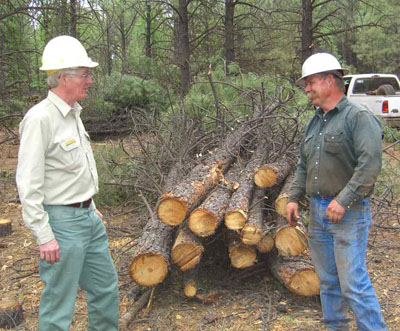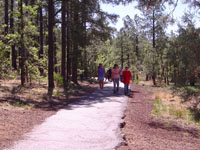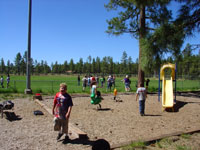 In 2005 the Woodland Lake Park Tract underwent a Fuels Management Treatment undertaken by the USFS. The decision to thin was in reaction to overcrowding of Ponderosa pines, meadow and riparian encroachment, bark beetle infestations, mistletoe infection and negative effects on wildlife from overstocking of trees. An average of 60 square feet of basal area per acre was the goal of thinning.
In 2005 the Woodland Lake Park Tract underwent a Fuels Management Treatment undertaken by the USFS. The decision to thin was in reaction to overcrowding of Ponderosa pines, meadow and riparian encroachment, bark beetle infestations, mistletoe infection and negative effects on wildlife from overstocking of trees. An average of 60 square feet of basal area per acre was the goal of thinning.
Throughout the 583 acres two to four acre openings were created for wildlife enhancement with several trees left within these openings.
Landowners bordering the Woodland Lake Park Tract, Arizona Game and Fish, environmental groups, Native American Tribes and the Town of Pinetop-Lakeside were all notified and encouraged to provide input in the process. Fifteen positive comments were recieved regarding the thinning. As per USFS regulations an extensive study on Threatened, Endangered and Sensitive Species was conducted by the District Wildlife Biologist and it was determined a "no effect" for all species. A cultural resource survey was also conducted by the Forest Archaelogist and it was concluded that no antiquities would be affected by any of the proposed ground disturbing activities.
![]()
The total cost of the thinning was $508 per acre for a total cost of $276,860. This figure does not include preparation of National Environmental Policy Act compliance, marking and cruising, administrative costs, or preparing and implimenting the prescribed burn.
The USFS states that ideally this thinning process should occur every 10 years to maintain a fire safe and healthy forest.


webdesign by chris rose
